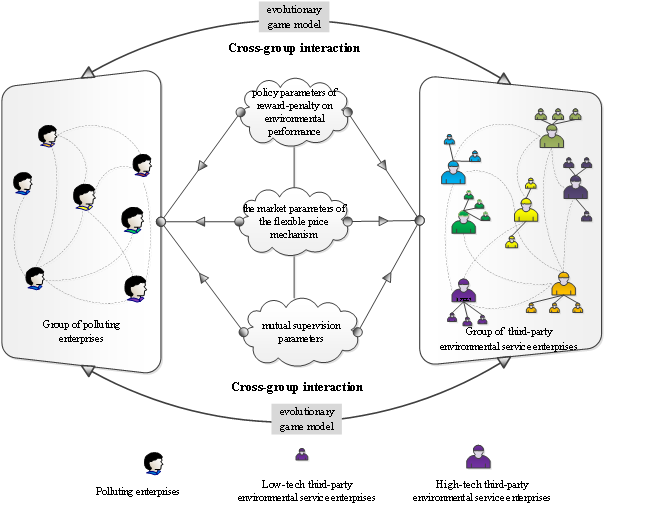-
Topic
-
VolumeVolume 27 (2025)
-
Issue
-
Pages1-15
- gnest_07823_final.pdf
-
Paper IDgnest_07823
-
Paper statusPublished

Given the practice of third-party environmental pollution governance (TEPG), this paper proposes evolutionary game model to study the collaborative mechanism of the main participants and guide the optimization of the third-party service market’s technological environment towards sustainability and high quality. Initially, the model integrates the government’s policy parameters of reward-penalty on environmental performance, the market parameters of the flexible price, and mutual supervision parameters between polluting enterprises and third-party environmental service enterprises. Subsequently, a two-dimensional dynamic system is constructed to explore the collaborative governance path within TEPG, deducing theoretical analysis results on evolution trajectory and boundary conditions essential for optimizing the third-party technological environment. Finally, A real-world case is taken as an example to evaluate the proposed model and investigate the impact of the three previously mentioned controllable parameters on the TEPG system’s evolutionary process. The findings suggest that the TEPG dynamic system can evolve in various directions, driven by the synergistic effects of policy, market, and supervision, which balance the profit and loss in environmental governance. This synergy fosters the development of effective collaborative governance strategies. Positioning the heterogeneous effects of market price mechanism in different development stages of TEPG practice, supplemented by policy and supervision instruments to meet the boundary conditions for optimizing the technological environment, it can facilitates steering TEPG market towards sustainable and high-quality development. Additionally, stimulating the endogenous motivation of participants to control pollution, alongside leveraging external resources, significantly accelerates the adoption of collaborative behaviors for polluting enterprises and third-party environmental service enterprises.
Total file downloads: 2